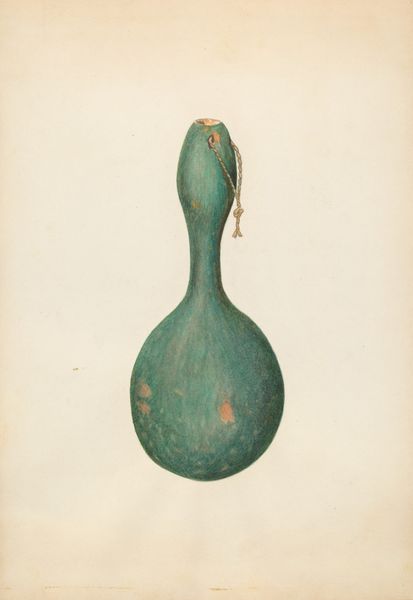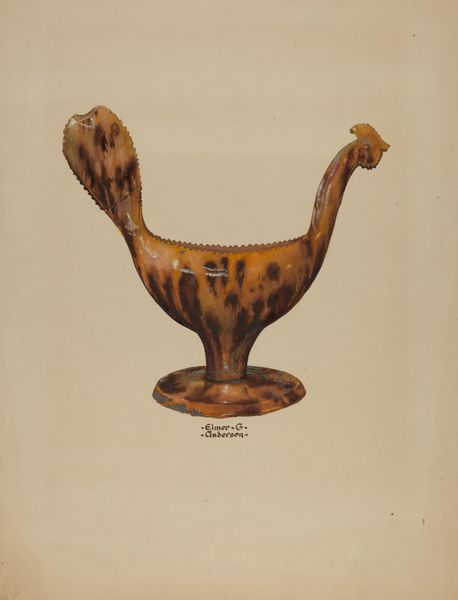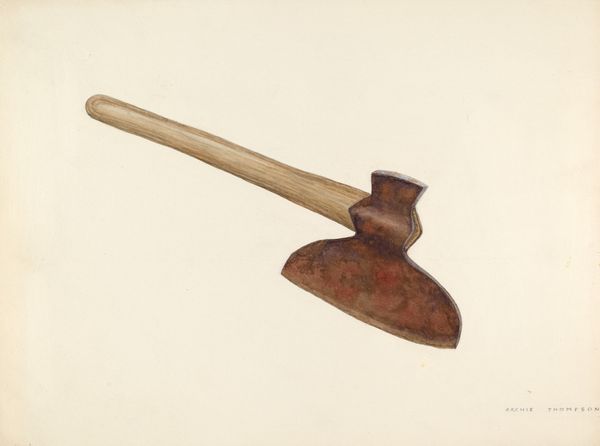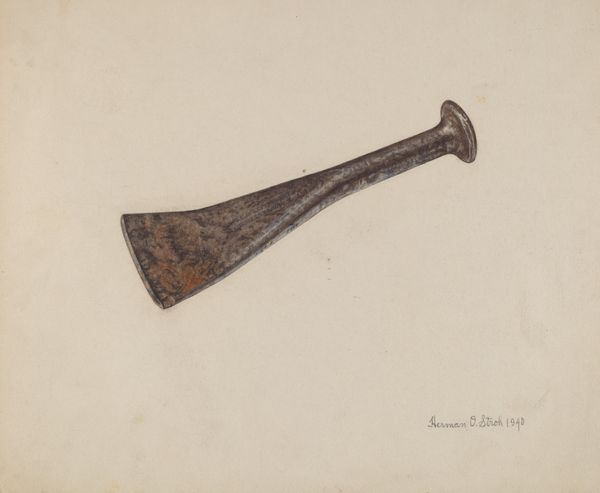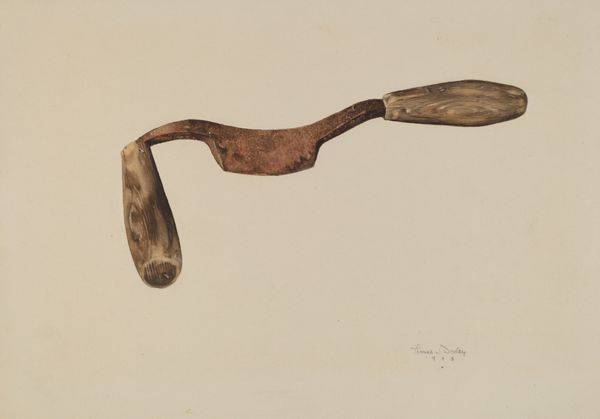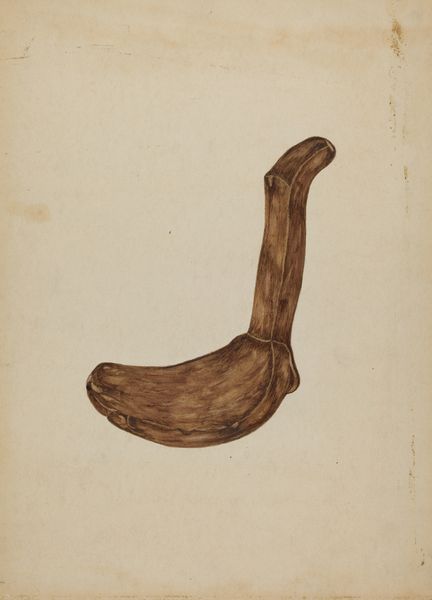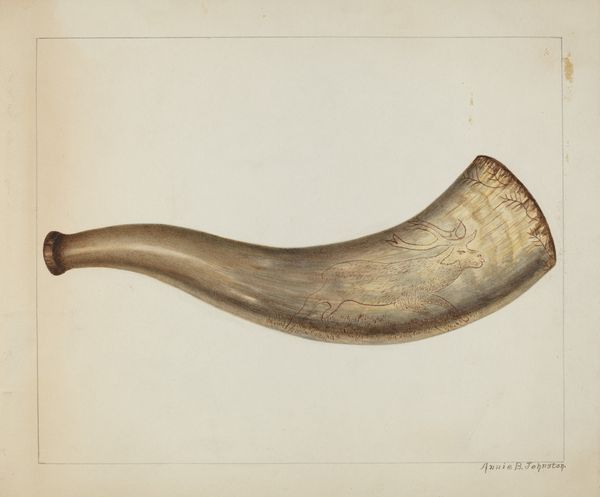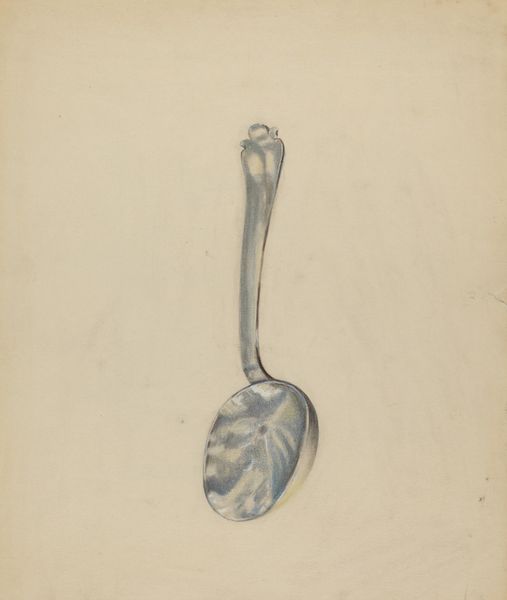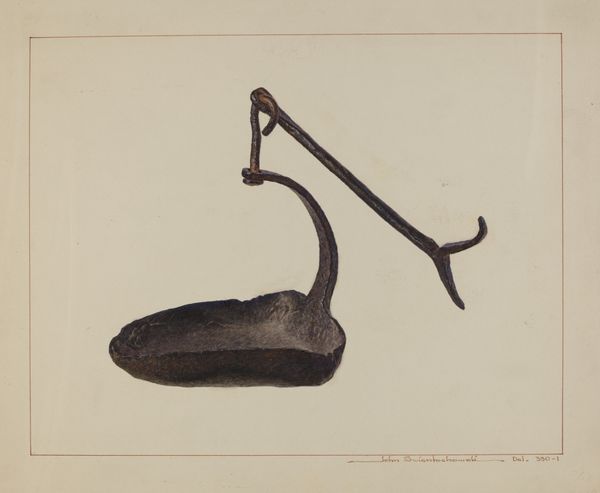
drawing
#
pencil drawn
#
drawing
#
toned paper
#
light pencil work
#
pencil sketch
#
charcoal drawing
#
possibly oil pastel
#
pencil drawing
#
underpainting
#
watercolour illustration
#
watercolor
Dimensions: overall: 35.5 x 28 cm (14 x 11 in.) Original IAD Object: 8 3/4" high; 4 11/16" wide; 4" deep
Copyright: National Gallery of Art: CC0 1.0
Editor: So, here we have Hester Duany's "Butter Worker," circa 1941. It appears to be a drawing, possibly with watercolor and pencil, depicting a wooden butter tool. It's quite simple, yet it exudes a certain warmth. What do you see in this piece? Curator: This deceptively simple image opens up several avenues for exploration. Beyond its surface-level depiction of a butter worker, we must consider the context of its creation. 1941... What social and political forces might have shaped Duany's perspective? Consider the role of women and domestic labor in that era. What statements might this seemingly benign depiction be making about the everyday lives of women? Editor: It's interesting that you immediately frame it in terms of gender and domesticity. I hadn’t immediately connected the image to such a pointed socio-political perspective. Are we in danger of reading too much into what may have been a simple study of form and light? Curator: Perhaps, but that is the point! Art rarely exists in a vacuum. By engaging in a critical dialogue, exploring potential interpretations rooted in historical and cultural contexts, we prevent ourselves from passively consuming art. Doesn't this image almost invite a conversation around craft and the artistic merit often denied to ‘domestic’ objects? Editor: I see what you mean. It’s about challenging those ingrained assumptions. How the act of rendering this utensil elevates its perceived worth, which forces us to re-evaluate. Curator: Precisely. And we also need to ask who is Duany and what positionality and privilege comes with this work. How are these tools received or even accessible by women across different communities? How could we situate Duany and the Butter Worker within broader intersectional narratives, acknowledging factors like race, class, and regional identity? Editor: This piece is much deeper than I initially perceived. Considering the layers of gendered labor and potential intersectional readings truly enriches the understanding. Curator: Agreed. It reinforces how crucial it is to consider these complex intersections to get a fuller picture. Thank you!
Comments
No comments
Be the first to comment and join the conversation on the ultimate creative platform.


